TUSD and the Common Core State Standards
COMMON CORE STATE STANDARDS
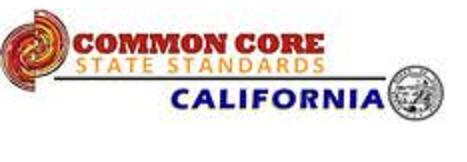
Welcome to TUSD's Common Core State Standards Webpage. This is intended for use by teachers, paraprofessionals, administrators, with a side panel of information for parents. We hope that you find this page useful and informative as we continue to improve our district, making it one of the best in San Luis Obispo County.
RCD MATERIALS
- Unit Assessment Planner.docx
- Common Formative Assessment.docx
- Plan Engaging Learning Experiences.docx
- Anatomy of a Unit
- RCD Unit Planning for Pre -Post Assessments.docx
- TUSD Rigorous Curriculum Design Unit Development Guide 1.0.pdf
- RCD Unit Assessment Planner.docx
- CC Unwrapped Standard.doc
KINDERGARTEN - 12TH GRADE
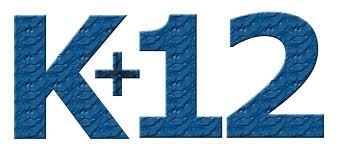
ASCD - Many resources and personal/professional learning opportunities. Visit their website www.ascd.org.
MORE RESOURCES FOR K-12!
Santa Ana Schools' great resources online here!
Inside Mathematics, there is something for everyone at this site!
More Inside Mathematics, with video resources on teaching methodologies!
STEM resources K-12
Writing at all grade levels (Write Source). Anchor papers are included.
Unpacking standards and more.
Nonfiction reading for all grade levels.
This is another gold mine to support CCSS and nonfiction reading with current events and topics.
Gooru is a great site for...well...every subject K-12. Preview for your student audience.
Depth and Complexity resources - Grade 3, but can be modified for use by other levels.
College and Career Readiness
This online mini-movie is part of the genome exhibit that was just released for DNA day.
How to develop Close Readers.
Key Points in English/Language Arts
Using Primary and Secondary Sources
Testing - Savvy tips for teachers and kids
K-8 Bird Experiential Science - flier
K-8 Bird Experiential Science - folder
Civic Education - resource
RIGOROUS CURRICULUM DESIGN - LARRY AINSWORTH
Ainsworth's "Big Picture" Diagram for Rigorous Curriculum Design
Depth of Knowledge (DOK) Chart
Hess's Cognitive Rigor Matrix and Curricular Examples
RCD Unit Assessment Planner.docx
TEMPLETON ELEMENTARY SCHOOL RESOURCES GRADES T-K TO 2

Environmental Education and the Common Core - Kindergarten, Grade 1, Grade 2
Sounds Like? Oct. 1 inservice
p>VINEYARD ELEMENTARY SCHOOL RESOURCES GRADES 3-4-5
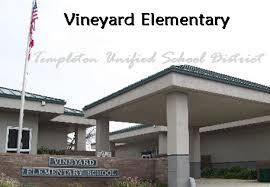
California History Resource Link
Environmental Education and the Common Core Grade 3, Grade 4, Grade 5
Grades 2-3 Math Problem Solving
Grades 4-5 Math Problem Solving
4th grade multiplication and division from Engage New York
Primary Source photographs and documents for California History
Performance task for area and perimeter - Grade 4
Symmetry also good Grade 4.
Here is a gold mine (pun intended) of gold rush photos and documents!!
Lines, Angles, Shapes, etc. for grade 4 taught through quilting.
Grades 3-4-5 Math Lesson Ideas for the Common Core - More than you can imagine!
Choose 3 ways - quick form to promote divergent thought in math.
TEMPLETON MIDDLE SCHOOL RESOURCES GRADES 6-7-8
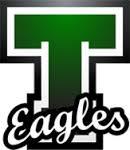
Environmental Education and the Common Core Grade 6, Grade 7, Grade 8
JUST FOR MATH - TMS!
The Smarter Balanced mathematics assessments for grades six and above allow students to access an embedded calculator appropriate to their grade level. Students in grade six will access a basic calculator, and students in grades seven and above will access a scientific calculator. The available Training Tests provide test items by grade bands, including a mathematics band for grades six through eight. When accessing the Training Test, students should be sure to select their current grade so that they may experience the computer-based testing features and functions, including the calculator, appropriate to their grade level. Training Tests are available through the CDE.
When Bell-Ringers Go Bad: My Quest to Deepen Start-of-Class Activities
By Kim McCready
For most of my 14 years of teaching, I've assigned "bell work" while attending to beginning-of-class duties. For longer than I care to admit, my bell ringers were bad.
These mini-assignments were well-intentioned. My students were writing (writing!) from the moment class began. That was great, right?
My old stand-by was "revise this paragraph in 5-7 minutes." Then I'd ask for volunteers or call on someone to read aloud a revised sentence and explain how it had been transformed. But I kept noticing simple sentences, uninspired diction, monotone voice. Why weren't they getting it?
I have since designed three campaigns to overhaul how my class begins. (By the way, I teach English, but these could be used by any teacher who seeks to improve literacy).
The First Push: Improving Vocabulary and Sentence Patterns
We begin with worksheets. A box at the top of each worksheet contains six to eight words from our weekly academic-vocabulary study. Below that, I list the days of the school week, leaving ample space for student writing beside each day. I assign each day a different sentence pattern from The Art of Styling Sentences by Ann Longknife and K.D. Sullivan. The challenge: Imitate the day's sentence pattern while correctly using a vocabulary word in context.
Plenty of tools are available: vocabulary books, dictionaries, our class set of sentence-pattern books. After several minutes, volunteers share their sentences under the document camera.
Soon, the more competitive students seek to out-do one another by correctly using as many vocabulary words as possible in a complex sentence pattern. They desperately want to share their writing with the class.
After a few weeks, I drop the worksheets. Instead, I write the vocabulary words on the board, adding the number of the day's sentence pattern or choice of patterns. (Turns out that limiting the options doesn't limit my students' creativity. They need those guide rails to feel comfortable with writing more complex sentences).
Finally, I pull vocabulary words only from our current major unit of study (Fahrenheit 451, The Tragedy of Julius Caesar, etc.). On Fridays, we draft a paragraph by combining the week's sentences into a coherent unit, adding transitions as necessary. When students share especially impressive paragraphs under the document camera, oooohhhs and aaaahhhs break out across the classroom
Next Up: Close Reading Done Right
The links between close reading, strong arguments, and skillful writing are undeniable. This campaign is grounded in short articles, blog posts, and editorials I share with students. Students tackle different tasks each day of the week:
Monday—Read the text from end to beginning, noting sentence structure and academic vocabulary (including jargon). Highlight short sentences in one color, longer ones in another. Note anything unusual, such as rhetorical figures.
Tuesday—Identify unfamiliar (or especially sophisticated) words found in yesterday's reading. Consider synonyms and determine why the author chose that specific diction. (My goal: Help students see how writers find "just the right word" to express their ideas).
Wednesday—Re-read the text and find evidence that helps them determine the author's purpose, main idea, targeted audience, and tone.
Thursday—Write three to four original sentences in a response to the text. In the response, emulate sentence structures or specific vocabulary found in the text.
Friday—Share yesterday's response aloud. (This leads to animated discussions as students voice their opinions on current issues!)
The Final Frontier: Tone Chips
Remember the monotone voices I'd noticed in my students' writing? I realized that the first few minutes of class were a great time to expose students to bits of writing that are anything but neutral: short excerpts, fiction, essays, poems, drama, speeches.
The first time I tried this exercise, I printed the excerpts on large note cards, then laminated and numbered them. Next: a trip to the hardware store to gather paint chips featuring three to four varying shades of a color. I labeled each tone chip with a word, its part of speech, definition, and synonyms.
Students do something different with the excerpts and chips each day of the week:
Monday—I give students an excerpt or a tone chip. Students mingle to find the tone that matches their excerpt. They love arguing over a particular tone chip if there's competition for one! Once (somewhat) satisfied, each student writes down the tone word and the number of the text excerpt.
Tuesday-Thursday—Students get in the pairs established on Monday and reveal their tone/excerpt matches to the class under the document camera. The fun: Sometimes they discover a more precise tone elsewhere in the classroom. It's all in the discovery!
Friday—To culminate, students form a "tone continuum" around the room. They categorize tones in general, such as "sad" or "happy" and arrange the excerpts from least intense degree of "sad" to the most intense. (Again, there is occasionally some productive disagreement about the rankings). The purpose: Improve their understanding of tone in their own and others' writing.
Yes, these opening activities require a little more front-end planning by me—and certainly absorb more class time—than in the past, but it's worth it. Better sentences, word choices, tone perception, and a different kind of energy among us all, setting the stage for more complex and sustained tasks. No more boring bell ringers!
Kim McCready is an English teacher at Seven Lakes High School in Katy, Texas. She is a NMSI Endorsed English Teacher Trainer and a member of the CTQ Collaboratory.
TEMPLETON HIGH SCHOOL RESOURCES GRADES 9-10-11-12
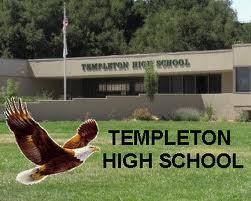
Environmental Education and the Common Core Grade 9 (not available), Grade 10, Grade 11, Grade 12.1, Grade 12.2
Common Core Math Resources K-12
SPECIAL SERVICES

ELD resource - "The Source"
EQuIP - Quality Review
ELD Framework
Helping English-Language Learners Adapt Under the Common Core by Wendi Pillars
The Common Core State Standards can be intimidating for those of us who teach students who are English-language learners or have special needs. How can we get a jump-start on preparing our students to succeed?
The first step: reflect on the subject's specific language strands. In what ways should students be able to communicate their knowledge? What language is most critical for their success with this content area, not only in the classroom but in the world? Which linguistic tools and resources do students need to be able to access to extend their knowledge? These are tough questions, and ones we should all consider daily-no matter who our students are.
Next, consider these three strategies to help diverse learners face a new set of standards. You can adjust each strategy to meet individual students where they are.
Motivating Learners with a Purpose
More than 17 years of teaching ELLs (including those with special needs) leads me to believe that students benefit from demonstrating their learning in purposeful, tangible ways. When designing my instruction, I ensure that students' use of language has a function, an outcome, or a result. For the student, the focus is not on "learning the language" but on solving a problem or sharing information.
I've been teaching this way for a long time. But it's a perfect pedagogical fit for the common standards, which posit that learning is not only about what you know, but about how you communicate that knowledge to others. When I ask students to use language purposefully, they begin to own the words they say and write.
Whether my students are writing or preparing a presentation, and whether they are working collaboratively or individually, I make sure that the outcome and expectations are explicit. I break down multi-step directions, present a model of the expected outcome, and use tangible objectives. For example, rather than asking students to "explain why Blackbeard was a fearsome pirate," I direct them to "explain orally and in writing why Blackbeard was a fearsome pirate, using three facts from the text and one opinion statement."
I seek projects that ask students to share their writing or speaking with others. In the past year, my students have blogged, partnered with other classrooms on Twitter, taken part in Global Read Alouds, produced Flick-it videos, and connected with old-fashioned snail-mail pen pals. Real-world communication among adults can involve anything from a tweet to an email to a research brief—so it makes sense for students to have a range of experiences.
I provide learners with support to take risks and recover from mistakes in a safe yet authentic environment. For example, my students might Skype with peers in a classroom across the world. I can help them "troubleshoot" nervousness, simple conversational misunderstandings, and ways to continue exchanging information even if we lose sound. The bonus for students? Developing global competencies even as they master the common-core standards.
Guiding Students to Discover, Revisit, and Use New Words
English-language learners come equipped with some mighty skills and knowledge, but their academic vocabulary is usually not an initial strength. And one of teachers' most important tasks is to help students "make words stick."
As much as possible, spiral students' exposure to new academic language over days, weeks, and months. The more they see, hear, and are expected to use the vocabulary, the greater the "sticking power." I create opportunities to revisit vocabulary several times over the course of 4-5 days, without resorting to rote exercises. For example, we might talk about an "array" of books displayed on a bookshelf and later interview the cafeteria staff about the "array" of vegetables on the lunch menu.
Read aloud to students occasionally—no matter their age, or your content area. In a ten-minute span, you can expose students to academic language above their reading level and vocabulary words used in novel ways. You can then use the vocabulary from read alouds to catalyze discussions, stir imaginations, and elucidate more difficult texts.
Be choosy about vocabulary to emphasize. Select words that can be used in multiple content areas, have common derivatives or roots, can help students describe the gist of what they are reading/doing, and will be (in your professional opinion) most useful. Teach students about Tier I, II, and III words, then guide them to classify words themselves as familiar, high-utility, and/or absolutely new to them. This will help them channel their learning efforts efficiently when they face an onslaught of vocabulary terms.
Listening and Conversing to Learn From Each Other
I used to focus on my questioning techniques to spur critical thinking and "discussion." I prided myself on asking questions that required more than a "yes" or "no" answer.
But then I realized something important. The question-and-answer format was still pigeonholing students, encouraging them to toss single-phrase or -sentence responses back at me. The message was clear if unintentional: Answer the question so we can get on to the next question.
So I've stepped up my game to spark conversation (rather than back-and-forth quiz show dialogue). I will admit it's difficult to craft prompts and tasks to provoke discussion among students—to push them to clarify concepts, fortify an argument, or negotiate a stance. But doing this has opened my eyes: I never realized how many opportunities for interaction I was neglecting for the sake of expediency.
When setting up conversation challenges, I consider students' content knowledge, comfort with vocabulary, and listening skills. I think about the degree to which they've mastered the conversational etiquette of taking turns—listening to "build upon" one another's ideas rather than to merely "have their say.
Here are some of the key techniques I use:
Model. For example, I sometimes pause to rethink (out loud) what I just said, or search for the right word rather than be content with my first thoughts. Did I build upon someone's comment—or at least acknowledge it—first, before adding my thoughts?
Listen closely and intervene to prevent the default to non-complex language. For example, I might think aloud, "Wait, we just learned how to say that differently. I think it sounds smarter when I say it like this."
Rely on the sense of community that I build in my classroom from day one. When students understand norms and are accustomed to interacting respectfully, they can better grasp the value of wait time, taking risks, and listening to learn from one another.
Share feedback. It can be fun to examine conversational practices in a fishbowl set-up—with the teacher sitting in the middle, demonstrating a "non-example." My students enjoy picking out what I'm doing wrong, and I can later reference that example to make feedback easier (and more concrete).
Offer language supports as needed—but remove them ASAP. I might use sentence or question prompts to get students started or help them when they get stuck. As I encourage students to refer to textual evidence for their argument, I might initially provide a specific page or paragraph number so they can focus on the information without the distraction of the hunt. But I don't want students to rely too much on these scaffolds, so I omit them as soon as I can.
How are you helping students meet the linguistic rigors of the common standards? How do you create opportunities during instruction to help students focus on what they want to say, using original combinations of core vocabulary and personal understanding?
I'd love to learn from your struggles and successes.
Wendi Pillars, a National Board-certified teacher, has taught ESL/EFL for 17 years, in grades K-12. She lives in continual reflection mode, energized by the challenges of providing rigorous learning opportunities for her diverse learners. You can connect with her in the Collaboratory or on Twitter @wendi322.
SBAC INFORMATION
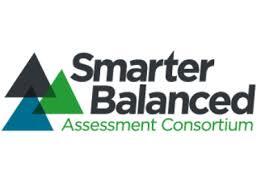
COMMON CORE VOCABULARY

WORDS TO GROW ON!
Researchers estimate 85% of achievement test scores are based on the vocabulary of the standards. Students from poverty, ELL students, and other at-risk students are particularly in need of learning these words in ways that meet their specific learning needs.
Below are the high frequency words of the CCSS and words present in the exemplars provided in Appendix B of the Common Core Standards.
CRITICAL VERBS
Analyze
Articulate
Cite
Compare
Comprehend
Contrast
Delineate
Demonstrate
Describe
Determine
Develop
Distinguish
Draw
Evaluate
Explain
Identify
Infer
Integrate
Interpret
Locate
Organize
Paraphrase
Refer
Retell
Suggest
Support
Summarize
Synthesize
Trace
CRITICAL NOUNS
Alliteration
Analogy
Argument
Central Idea
Conclusions
Connections
Connotative Language
Details
Evidence
Figurative Language Illustrations
Interaction
Metaphor
Mood
Point of view
Rhetoric
Simile
Stanza
Structures
Theme
Tone
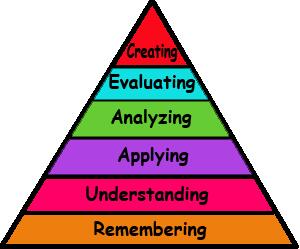
COGNITIVE RIGOR RESOURCES
GRADE BY GRADE PARENT MANUALS
Click here for K-12 information about the Common Core Standards from the National Parent Teachers' Association.
This site provides information using PDF, visit this link to download the Adobe Acrobat Reader DC software.
